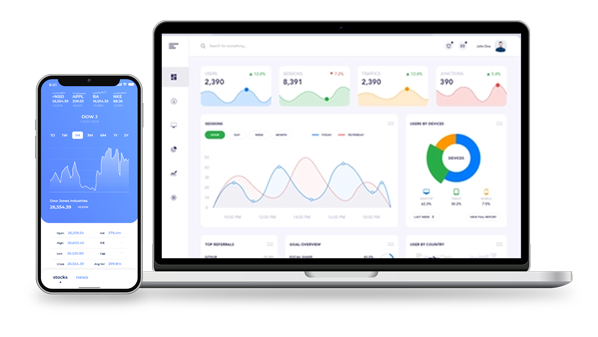The Bank Nifty Index: Navigating the Financial Landscape
If you’re interested in the world of finance and investments, the Bank Nifty Index is a term you should familiarize yourself with. It’s a crucial component of the Indian stock market, offering valuable insights into the performance of the banking sector. In this introductory guide, we’ll take a closer look at what the Bank Nifty Index is, how it works, and why it matters to investors and traders.
What is the Bank Nifty Index?
The Bank Nifty Index, often referred to simply as “Bank Nifty,” is one of the two main stock indices in India, the other being the Nifty 50. Bank Nifty is a sectoral index that comprises the most liquid and actively traded banking stocks listed on the National Stock Exchange (NSE). It provides a snapshot of the overall performance of the banking sector within the Indian equity market.
Composition of Bank Nifty
Bank Nifty consists of the most prominent banking and financial institutions in India. These typically include major public sector banks, private sector banks, and financial companies. Some of the well-known constituents of Bank Nifty include State Bank of India (SBI), HDFC Bank, ICICI Bank, Kotak Mahindra Bank, and many others.
How Does Bank Nifty Work?
Bank Nifty is calculated using a free-float market capitalization-weighted methodology. This means that the index reflects the total market capitalization of its constituents, adjusted for the portion of shares that are available for trading. Companies with larger market capitalizations carry more weight in the index.
The index is calculated based on the market prices of the stocks it comprises. As these stock prices fluctuate throughout the trading session, the Bank Nifty value also changes in real-time. This makes it a dynamic indicator of the banking sector’s performance.
Why is Bank Nifty Important?
- Sectoral Insight: Bank Nifty provides investors and traders with a clear view of how the banking sector is performing relative to the broader market. This is valuable for those interested in specific sectors or looking to diversify their portfolios.
- Market Trends: It can be used to identify trends in the banking sector, helping investors make informed decisions about when to buy or sell banking stocks.
- Risk Management: Investors can use Bank Nifty as a benchmark to assess the risk associated with banking stocks in their portfolios.
- Trading Opportunities: Traders often use Bank Nifty derivatives such as futures and options to speculate on short-term price movements in the banking sector.
- Economic Barometer: The banking sector is closely tied to the overall health of the economy. Changes in Bank Nifty can indicate broader economic trends.
In conclusion, the Bank Nifty Index is a vital tool for anyone interested in the Indian stock market, particularly the banking sector. Whether you’re an investor, trader, or simply someone looking to understand the dynamics of the financial world, Bank Nifty provides valuable insights and a window into the performance of India’s banking industry. As you continue your journey into the world of finance, keep a close eye on this index for a deeper understanding of the market’s heartbeat.
























